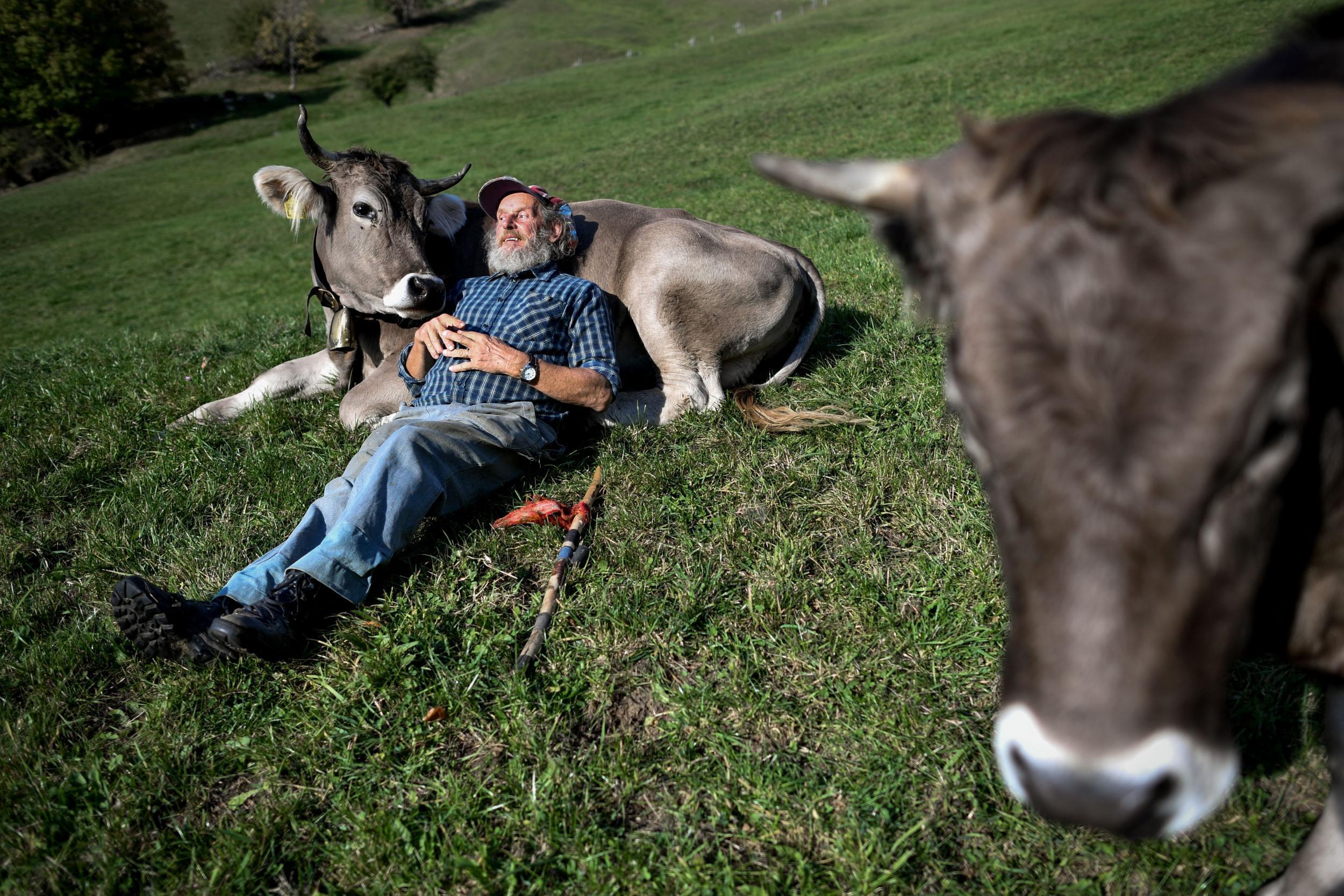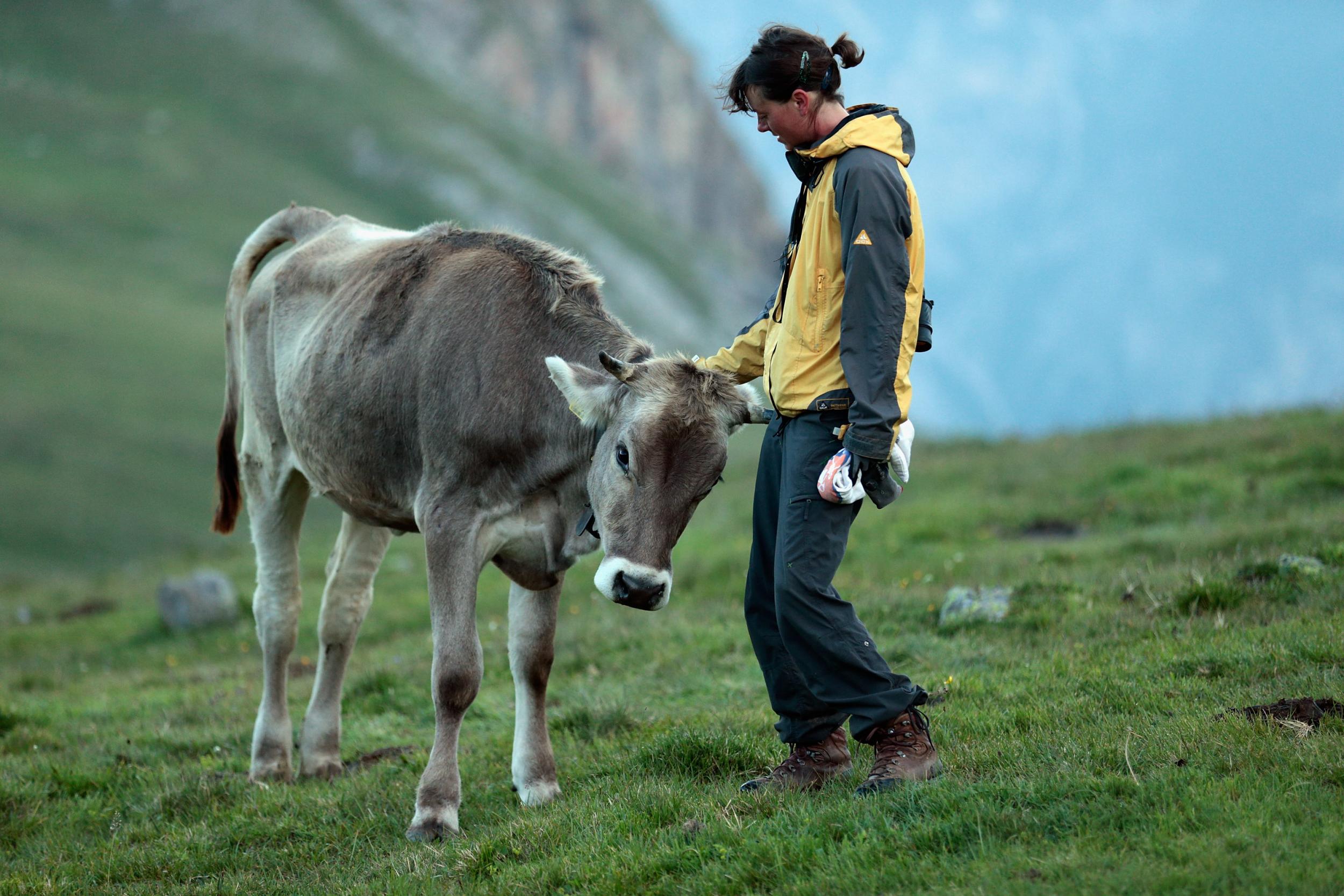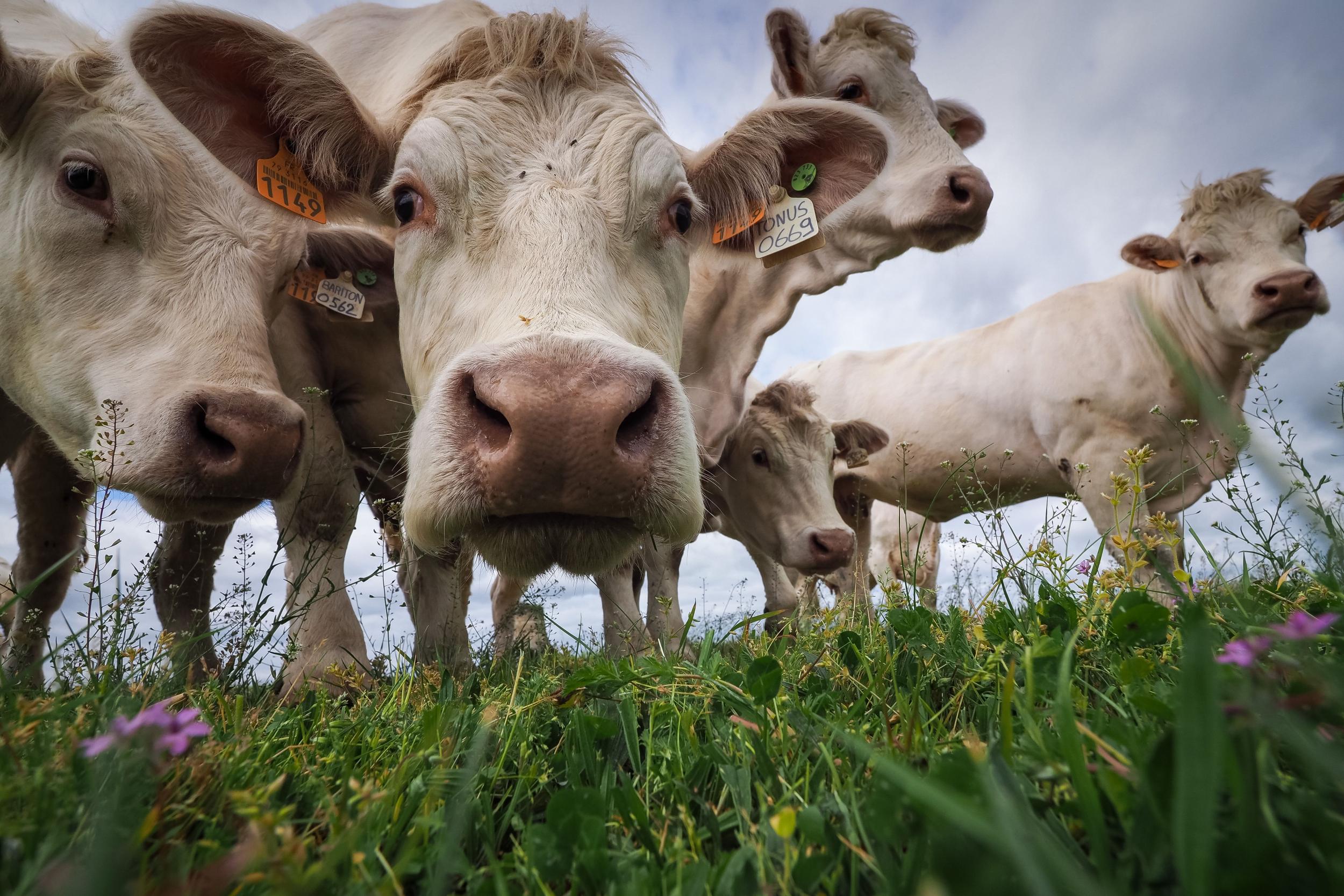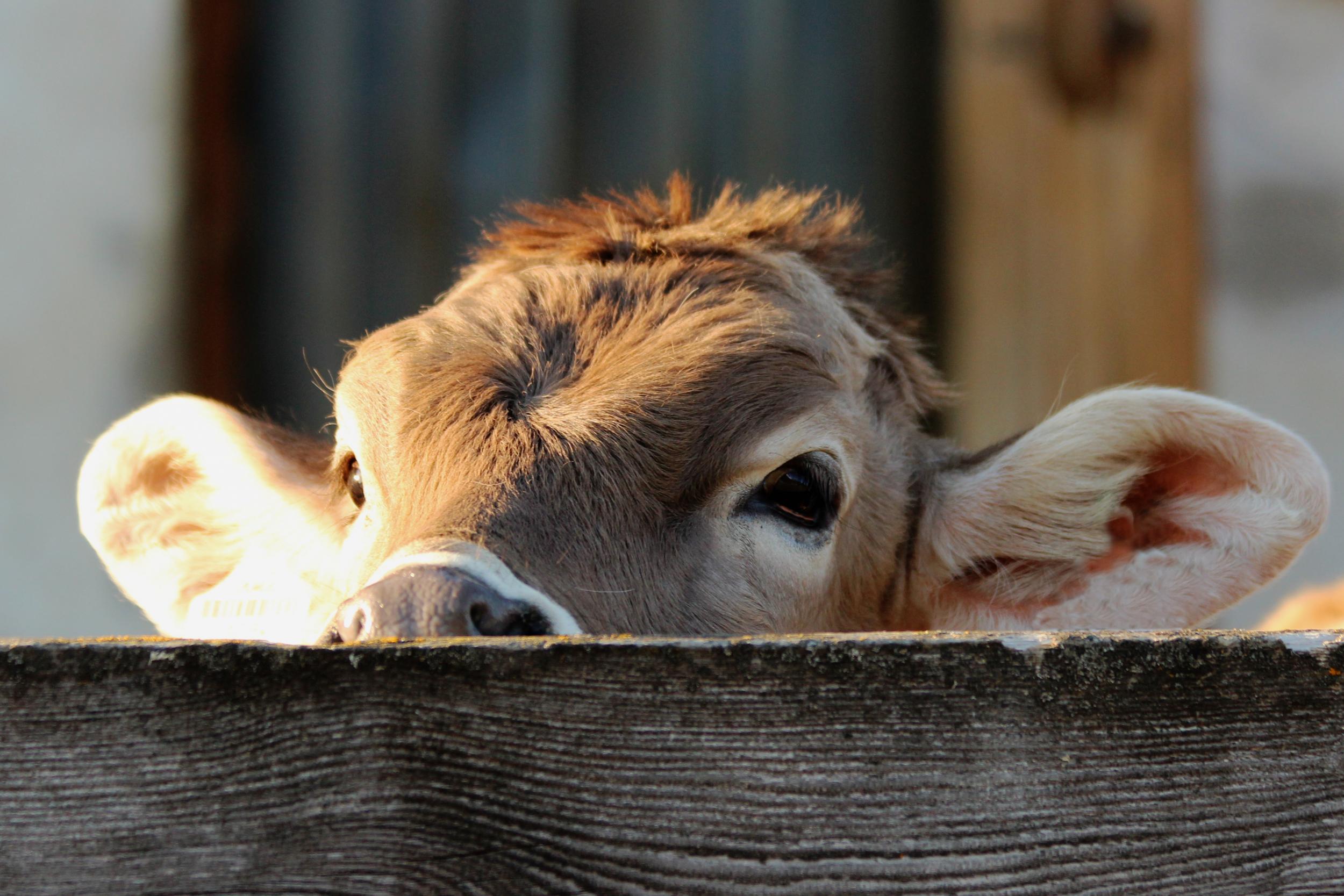Cow cuddling: The latest therapeutic trend taking off in the US
Different forms of animal therapy have long been experimented with, but, as Elisa Mala finds out, none can quite compare with the most recent

Your support helps us to tell the story
From reproductive rights to climate change to Big Tech, The Independent is on the ground when the story is developing. Whether it's investigating the financials of Elon Musk's pro-Trump PAC or producing our latest documentary, 'The A Word', which shines a light on the American women fighting for reproductive rights, we know how important it is to parse out the facts from the messaging.
At such a critical moment in US history, we need reporters on the ground. Your donation allows us to keep sending journalists to speak to both sides of the story.
The Independent is trusted by Americans across the entire political spectrum. And unlike many other quality news outlets, we choose not to lock Americans out of our reporting and analysis with paywalls. We believe quality journalism should be available to everyone, paid for by those who can afford it.
Your support makes all the difference.Even without a psychology degree, Bella’s natural talents made her an excellent therapist: she is calm and accommodating of a range of personalities, with the patience to listen to endless problems without so much as a judgmental moo.
From a lush, secluded pasture on the Mountain Horse Farm, a 33-acre bed-and-breakfast in the Finger Lakes region of New York state, three-year-old Bella and two-year-old Bonnie are the Highlander-Angus crossbred cows that provide animal-based therapy.
Cow cuddling, as the practice is called, invites interaction with the farm animals via brushing, petting or heartfelt chats with the bovines. The experience is similar to equine therapy, with one game-changing difference: horses tend to stand, but cows spontaneously lie down in the grass while chewing their cud, allowing humans to get even more up close and personal by joining on the ground and offering a warm embrace.
As more people are turning to a variety of animals – dogs, ducks, alligators – for their mental health, states are cracking down on how and when therapy animals can be used. But cows? You can’t take them with you.
“Can you see how quiet she gets?” says Suzanne Vullers, 51, an equine therapist who co-owns the bed-and-breakfast with her husband Rudi Vullers, also 51. “That’s what we’re looking for,” she says. “For the person and the cow.”

Hailing from the rural town of Reuver, in the Netherlands, the pair came across “koe knuffelen”, which means “cow hugging” in Dutch, on a return visit to their homeland two years ago. In parts of the Netherlands, cow cuddling is offered as part of half-day visits, and is part of a larger movement to connect people with country life. In the major urban centre of Rotterdam, a newly opened floating dairy farm in the city’s oldest port invites city dwellers to visit the beasts.
About a decade earlier, in 2007, the couple – he a former supply chain manager, she a former accountant – traded their corporate lives to set up their farming shop in Naples (population: 2,500. Claim to fame: a grape festival that takes place in the autumn, with a competition for grape pie). The idea of cow cuddling opened the barn gates.
The cows get to live a natural life – they aren’t production animals and they’re not raised for beef or dairy
In May of 2018, they purchased Bonnie and Bella, selecting them for their gentle personalities and lack of horns. “A lot of cows are not suited for it,” Rudi says. “They can chase you out of the field.”
Hour-long cow-cuddling sessions, priced at £60 per couple for the hour, are capped at two a day, with a maximum of four participants per session. “It’s not a petting zoo,” says, though the animals are indeed pets in a sense – they aren’t production animals, and they’re not raised for beef or dairy. “These girls get to live a natural life,” Suzanne says.

Each session is overseen by two human counterparts: an equine therapist, usually Suzanne, who can read the animals’ moods to ensure a safe, positive interaction with their new human friends, and a second handler, who keeps a watchful eye on the other animals in the field.
Neither has a psychology degree, which is kind of the point: “Whatever they’re going through, they don’t have to talk about it,” she says. “It’s not like [conventional] therapy, right?”
Clothing is important – they might slobber on you
Like other forms of therapy, the hope is for visitors to foster trust, empathy and connection with the cows and their own emotions. And as with any other kind of therapy, there are no guarantees of successful outcomes: “They’re not trained to lie down,” she says.
On a recent Saturday, two pairs of people, an engaged couple from Silicon Valley and a mother-daughter duo from upstate New York, had travelled from opposite sides of the country to cuddle some cows.
“Drive five hours to hug a cow?” says Karen Hudson, 57, a construction company manager, who attended the afternoon session with her daughter, Jessica Ercoli, 27, a probation officer.
For Hudson, it’s a sort of wish fulfilment, a throwback to the fond memories of visiting her grandmother’s farm. And perhaps a bit of fate, too. The email address she has used for over two decades includes the words “Missy”, which happens to be the name of miniature horse on the farm, and “moo”.
Leading the two excited but tentative women onto the field, Suzanne offers guidance on a successful approach before demonstrating the methods herself. “O posture, not X posture,” she says. “Round the body” to appear less threatening. Walk up to the cow’s shoulders rather than its haunches.
“Clothing is important,” Rudi says. “They might slobber on you.” (Definite requirement: closed-toe shoes.)
For observers: “Stand sideways. It makes a world of difference to them,” Suzanne says.

Advice for participants: “Respect them and their world and what they want to do and what they want to give you,” she adds.
Number one advice for everyone: remain calm. “The more relaxed you are, the better it will be for you and them,” Suzanne says, because horses and cows alike sense emotions and respond in kind – most of the time.
“Don’t rub your snot on me!” says Ercoli to Bella.
Colin Clover, 50, a recruiting manager at Facebook attending the morning session, stumbled upon this extracurricular activity the way that many people discover niche wellness trends: the internet. He knew his fiancee Alexandria Rivas, 31, a receptionist, artist and longtime equestrian enthusiast, had fond memories of visiting the dairy farm next to the college she attended.
Though he had once trained dolphins and sea lions, the idea of sidling up to a 900lb (400kg) heifer intimidated him. The nerves subsided, he says, when Suzanne framed it in a way he understood. “Think of how you would interact with your dog,” he recalls her saying.
In their separate sessions, the pairs have a chance not just to meet the cows, but the entire coterie of characters. In the barn and field: Jaxon, the 1,800lb stallion; Stetson, a gelding, named for the hat; Cricket and Noa, mares rescued from abusive conditions; Suzie Q and Missy, miniature horses with distinct personalities. “Missy is always the first to say hi,” explains Suzanne of her outgoing, plump-bellied friend.
For the final surprise of the day, the farmers invite the visitors to hand-feed the cows oat-based treats, which many participants describe as their favourite activity. Even though, Hudson says, the cows’ tongues “were like sandpaper!”
Still, it was better than a different kind of surprise: “Sometimes cows drop things,” Suzanne says.
Perhaps recognising they are in polite company, the cows only drop themselves. Lowering to the ground, they offer participants what they’ve travelled across state and country to experience: a chance for a warm embrace.
© New York Times
Join our commenting forum
Join thought-provoking conversations, follow other Independent readers and see their replies
Comments